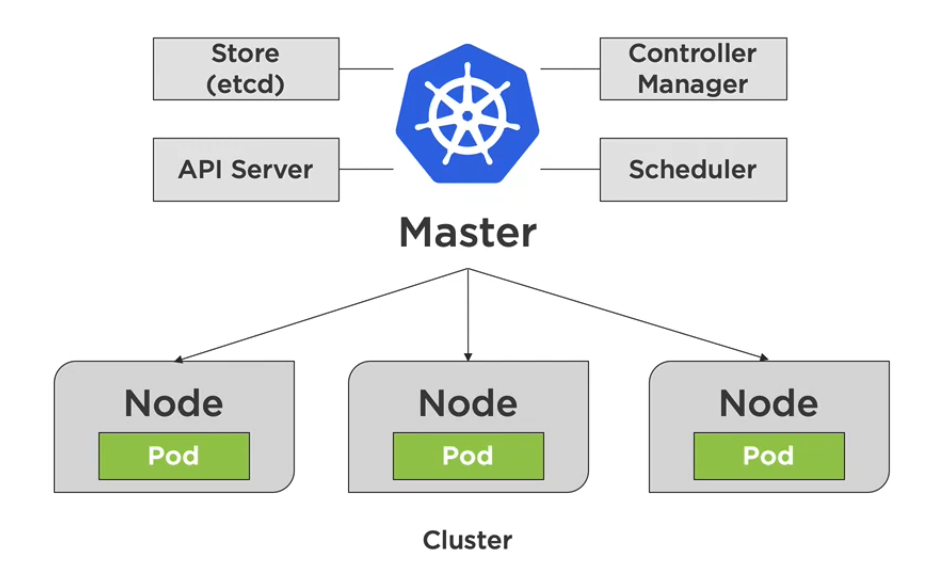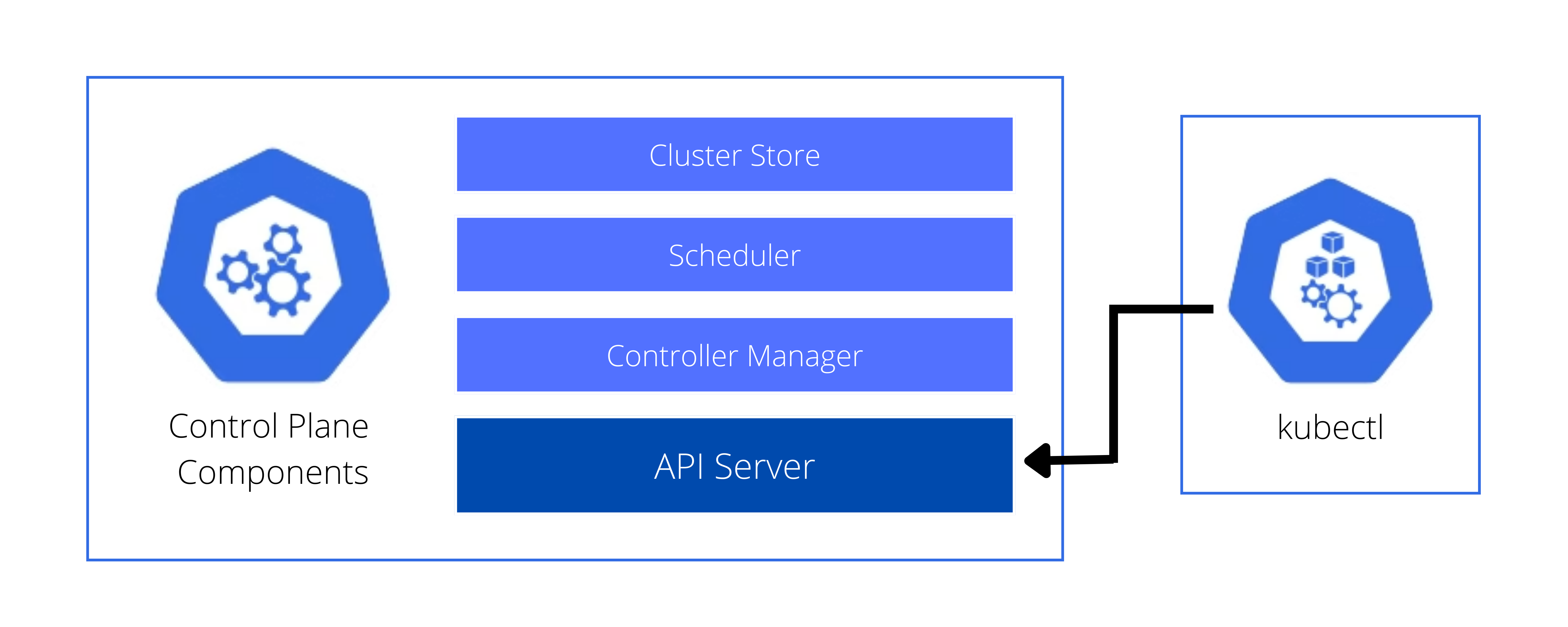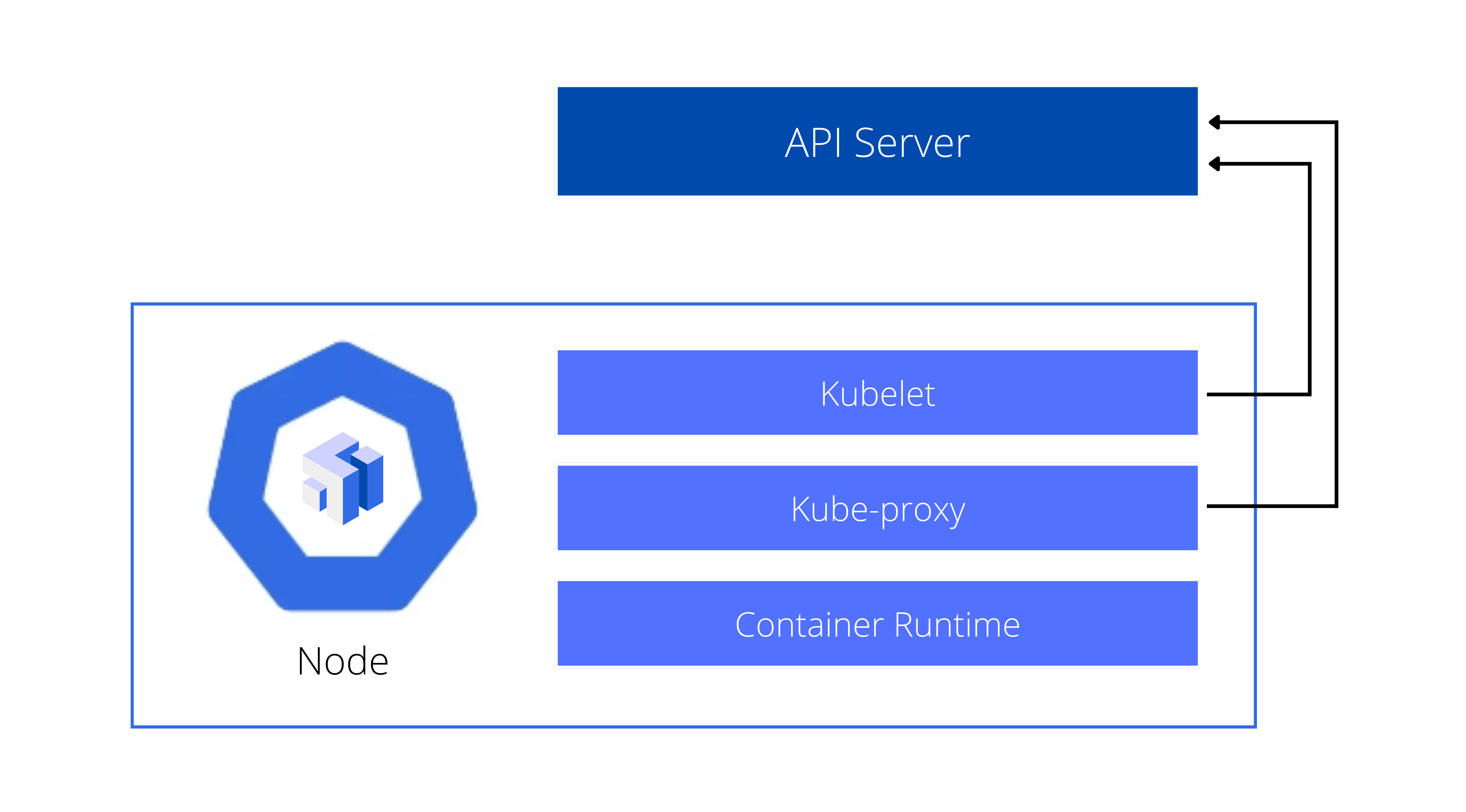All-Things-Docker-and-Kubernetes
Kubernetes Cluster
What comprises a Kubernetes Cluster

A Cluster is a collection of distributed physical or virtual servers or nodes, which is used to host and manage workloads.
It has two types:
- Master node (control plane)
Makes global decisions about the cluster. Its components are:
- kube-apiserver - exposes the Kubernetes API
- kube-scheduler - decides which node will handle workload
- kube-control-manager - ensures resources are up-to-date
- etcd - backs-up and keeping manifests for the entire cluster
- Worker nodes (data plane)
Used to host application workloads. Note that both component below are running on all nodes - both on master and work nodes.
- kubelet - agent that runs on every node, notifies the kube- apiserver that this node is part of the cluster
- kubeproxy - network proxy that ensures the reachability and accessibility of workloads places on this specific node
Master Node - Control Plane

The master implements the core control functions fo a cluster.
- primary access point for cluster administration
- coordinates cluster operations
- handles monitoring and scheduling
- only runs system Pods, which includes the API server, Cluster Store, Scheduler, and Control Manager
- workloads are always forwarded on the Pods on the nodes
The master is composed of the following:
API Server
- essentially the commmunication hub
- core to all the operationa
- all configuration changes pass through the API server
- simple REST API interface
- verifies the operation and updates the etcd
etcd (Cluster store)
- persists the state of the Kubernetes objects
- objects are persisted into a key-value store called etcd
- implements watches on the stored keys
- all other services are stateless and grab from API server
Scheduler
- manages which Nodes to start Pods on
- watches the API server for unsceduled Pods,
- evaluates the resources required by a Pod,
- handles the resource constraints that we define,
- and then schedule the Pods on nodes
-
2-steps process
- Filtering - find feasible nodes where resources could fit
- Score - Rank each node to choose the most suitable Pod placement
Controller Manager
- handles lifecycle functions of the Controllers
- constantly running the controller loops
- watch the current state of the system
- update the API server based on the desired state
-
types:
- Node controller - noticing and responding to nodes
- Replication Controller - maintain the correct number of Pods
- Endpoints Controller - populates endpoint objects (join servces and Pods)
- Service Account and Token Controllers - create default accounts and API access tokens for namespaces
Cloud Controller Manager - for EKS Setup only
- handles communication with AWS
- autoscaling for bringing up more nodes
- provision EBS to back container volumes
- provision loadbalancers
In addition to these five, we’ll also mention kubectl, which isn’t a part of the control plane but is necessary to interact with the API Server.
Worker Node

The node is responsible for starting the pod and ensuring Pods are up and running.
- handles networking
- clusters comprised of multiple nodes
The node is composed of:
Kubelet
- this is the node agent that talks to API server which provides the scheduling
- starts and stops up Pods based on the API server
- if Pods are scheduled for a node, kubelet starts it up
- reports Nore and Pod state
- executes liveness probes which monitors the state of the application and Pods themselves
Kube-proxy
- network proxy that runs on each nodes that provides rules for cluster IPs
- handles the Pod networking
- talks to API server, which provides the networking information
- if there are changes in networking, the kube-proxy handles the modifications
- use network proxy iptables
- handles services abstraction
- routes traffic to Pods
- manages the loadbalancing
Container Runtime
- actual runtime environment for the container image
- pulls the container image from the registry
- provides the environment for the image to run
- default runtime is Docker but there are many others
Scheduled/Add-Ons
These are Pods that provide special services to the cluster.
- an example is the DNS Pods, which handles DNS operations
- IP of DNS Pod is in the network configuration
- DNS Pod is used for service discovery inside of the cluster
- other examples are ingres controllers and dashboard for web-based administration